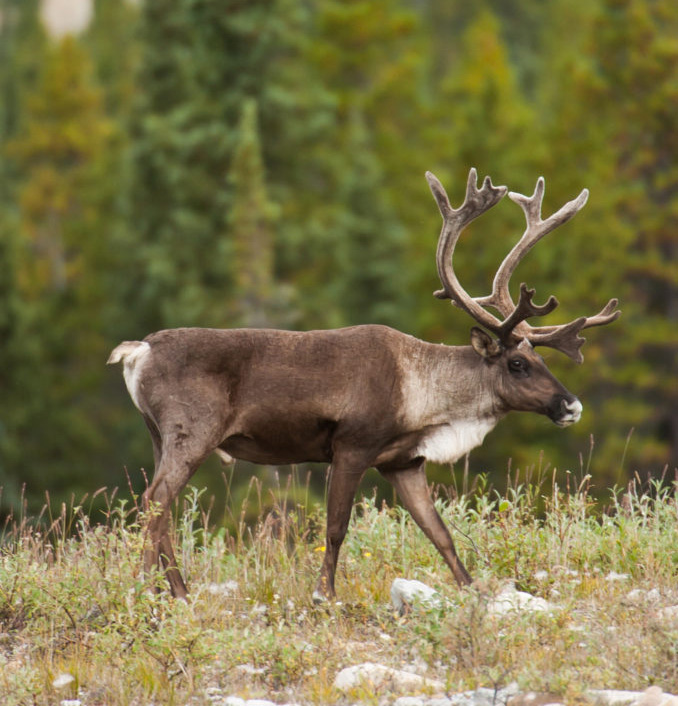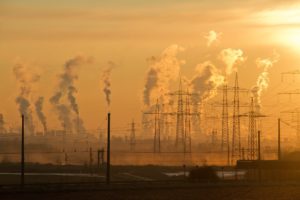UN Report

Today, CPAWS-SK Executive Director Gord Vaadeland and Northern Projects Manager Sarah Schmid and are in Meadow Lake at a planning meeting for Woodland caribou recovery: just one of the 1 million species that could go extinct within decades if action is not taken, according to yesterday’s report by the Intergovernmental Science-Policy Platform on Biodiversity and Ecosystem Services (IPBES).
This report, released by the United Nations, warns of nature’s dangerous decline and the horrifying acceleration of species extinction rates world over.
About the report and its relevancy to Woodland caribou conservation in Saskatchewan, Vaadeland posted on Facebook:
Think the warning for the human species is far fetched? I don’t. Consider the impact to the humans who existed on the North American grasslands for thousands of years prior to when bison were removed from the landscape. It was devastating. Starvation, disease and other health issues, disillusionment, conflict… Just one of thousands of examples globally.
All of us benefit from a healthy environment, as that is how we protect things like air, water and food sources, while working towards reconciliation with Indigenous people, improving human health, creating a peaceful world, and helping to find solutions for other critical issues such as our changing climate.
So today, we are talking about caribou. We have so much more to do, and we will do everything we can for this species and hopefully many more. We have heard today from many First Nations and Metis people of the importance of this species to their community, culture and history. And I’m reminded of what happened a century ago with the bison. We shouldn’t need a report to remind us, as the examples are there. We can’t continue to let the same things happen…we know better.
The Scary Numbers:
The report, which calls for “transformative changes” world-wide to restore and protect nature, emphasizes that current global responses are not enough to reverse these frightening prospects. Some notable findings of the report include:
- ¾ of terrestrial ecosystems and 2/3 of marine ones have faced significant upheaval from human disturbance, but that on average the severity is not as significant in areas managed by Indigenous and local communities.
- More than 1/3 of the planet’s land surface is devoted to crop or livestock use… and nearly 75% of freshwater resources are dedicated to the same.
- Urban areas have more than doubled since 1992.
- Plastic pollution has increased tenfold since 1980.
- 300-400 million tons of toxic industrial waste are dumped annually into the world’s waters.
- Fertilizers entering coastal ecosystems have produced more than 400 ocean ‘dead zones’, totalling more than 245,000 km2– a combined area greater than that of the United Kingdom.
- Negative trends in nature will continue to 2050 and beyond in all of the policy scenarios explored in the report, except those that include transformative change.

It’s Up to Us to Fix This.
Unsustainable human activity is the cause of almost every single instance of disturbance on Earth’s surface. This includes severe alteration to 40% of marine environments, 50% of inland waterways, and 75% of land.
The loss of nature and climate change are directly related.
The loss of carbon storing ecosystems means more greenhouse gasses and every-increasing global warming. This in turn impacts habitats and destroys biodiversity, feeding into a vicious cycle that will slowly (or not so slowly, as it happens) make our planet uninhabitable for animals or humans.
Extinction is permanent. Once a species is gone, there’s no getting it back. The same can be said for much of the beautiful natural world that we all like to enjoy, especially here in Canada. Permafrost, glaciers, and sea ice are all examples of integral parts of our Northern ecosystems that can’t be recovered once they’re gone.



So What Do We Do?
The answer is simple. Nature Needs Half.
The CPAWS grand vision is to keep half of Canada wild, forever—and this is just a start.
The Government of Canada is currently committed to doubling our nation’s protected spaces by 2020—bringing the number from its current 10.5% to 17% of Canadian land and inland waters protected.
This Pathway to 2020 is just the first step. Even if we see this plan achieved, that will still leave 80% of Canadian nature vulnerable to further degradation of critical habitat.
We encourage you to help us hold our government accountable for climate change, and to protect Canada’s wilderness and the precious creatures that live there.
Together, we can keep Canada wild. Take the pledge right here.
- The Report UN Report: Nature’s Dangerous Decline ‘Unprecedented’; Species Extinction Ratees ‘Accelerating’ UN News, World is ‘on notice’ as major UN report shows one million species face extinction
-
Media Coverage
- National Geographic, One million species at risk of extinction, UN warns;
- CBC, Nature is in its worst shape in human history, UN report says;
- CNN, One million species threatened with extinction because of humans;
- BBC, Nature crisis: Humans ‘threaten 1m species with extinction;
- Washington Post, One million species face extinction, U.N. report says. And humans will suffer as a result
